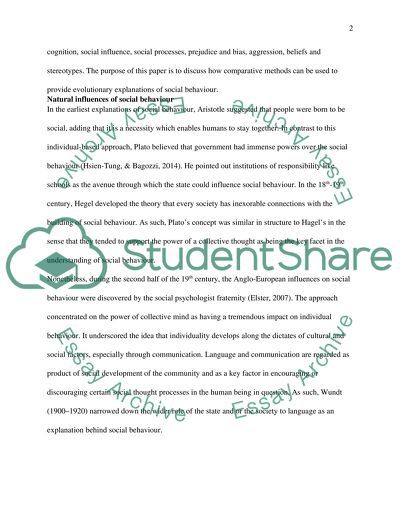Cite this document
(“Discuss how comparative methods can be used to provide evolutionary Essay - 1”, n.d.)
Discuss how comparative methods can be used to provide evolutionary Essay - 1. Retrieved from https://studentshare.org/psychology/1680452-discuss-how-comparative-methods-can-be-used-to-provide-evolutionary-explanations-of-social-behaviour
Discuss how comparative methods can be used to provide evolutionary Essay - 1. Retrieved from https://studentshare.org/psychology/1680452-discuss-how-comparative-methods-can-be-used-to-provide-evolutionary-explanations-of-social-behaviour
(Discuss How Comparative Methods Can Be Used to Provide Evolutionary Essay - 1)
Discuss How Comparative Methods Can Be Used to Provide Evolutionary Essay - 1. https://studentshare.org/psychology/1680452-discuss-how-comparative-methods-can-be-used-to-provide-evolutionary-explanations-of-social-behaviour.
Discuss How Comparative Methods Can Be Used to Provide Evolutionary Essay - 1. https://studentshare.org/psychology/1680452-discuss-how-comparative-methods-can-be-used-to-provide-evolutionary-explanations-of-social-behaviour.
“Discuss How Comparative Methods Can Be Used to Provide Evolutionary Essay - 1”, n.d. https://studentshare.org/psychology/1680452-discuss-how-comparative-methods-can-be-used-to-provide-evolutionary-explanations-of-social-behaviour.


